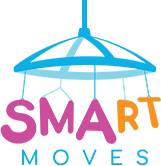Clinical Presentation of SMA
SMA has historically been categorized into subtypes based on age that symptoms begin and highest motor milestone achieved. This classification continues to apply to adults, teens, and some children in SMA. The most common three types in children present as follows:
Symptom onset <6 months
Historically Type 1 (SEVERE/MOST COMMON FORM)
- Progressive hypotonia
- Typical supine position is bent elbows and frog legs
- Difficulty lifting extremities against gravity
- Rapid paradoxical breathing or belly breathing
- Bell-shaped chest
- Poor head control / head lag
- Bulbar weakness / dysphagia
- Developmental regression
- Never sits
Symptom onset 6 to 18 months
Historically Type 2
- Progressive hypotonia
- Difficulty lifting extremities against gravity
- Possible paradoxical breathing or belly breathing
- Possible bell-shaped chest
- Tongue fasciculations
- Absent deep tendon reflexes
- Developmental regression
- Delayed sitting and never walks unaided
Symptom onset 1.5 to 10 years
Historically Type 3
- Progressive hypotonia
- Muscle tremor
- Fatigue with exertion and frequent falls
- Gower’s sign, Trendelenburg gait, hyperlordosis, and foot overpronation
- Developmental regression
- Delayed walking
Following the approval of disease modifying treatments for SMA (SMN enhancing therapies) and the implementation of newborn screening for SMA in 2018, the historical classification of SMA does not adequately describe the new generation of infants and children with SMA treated early in life. In addition, more infants are being diagnosed and receive treatment prior to the onset of symptoms. With treatment, individuals are gaining more physical milestones and abilities than natural history would predict.
The SMA community of healthcare providers, people with SMA, and their families are having many conversations about how to best describe SMA disease in the era of disease modifying SMA treatment. Characteristics that have risen to the top and that are generally used together include:
- SMN2 copy number (SMN2 is an important disease modifying gene. Click here for more information).
- Current motor function
- Age at symptom onset
- Impact of symptoms or the severity of symptoms
Click here for a Reference Guide to Clinical Presentation
Although SMA newborn screening has been implemented in all 50 states, providers should remain watchful, as approximately 3% to 5% of individuals with SMA will not be identified by newborn screening due to SMN1 point mutations. Promptly evaluate for SMA upon suspicion in clinic. Additional genetic testing, SMN1 gene sequencing, may be required to evaluate for SMA. Rapid response can save and dramatically improve a child’s life.
